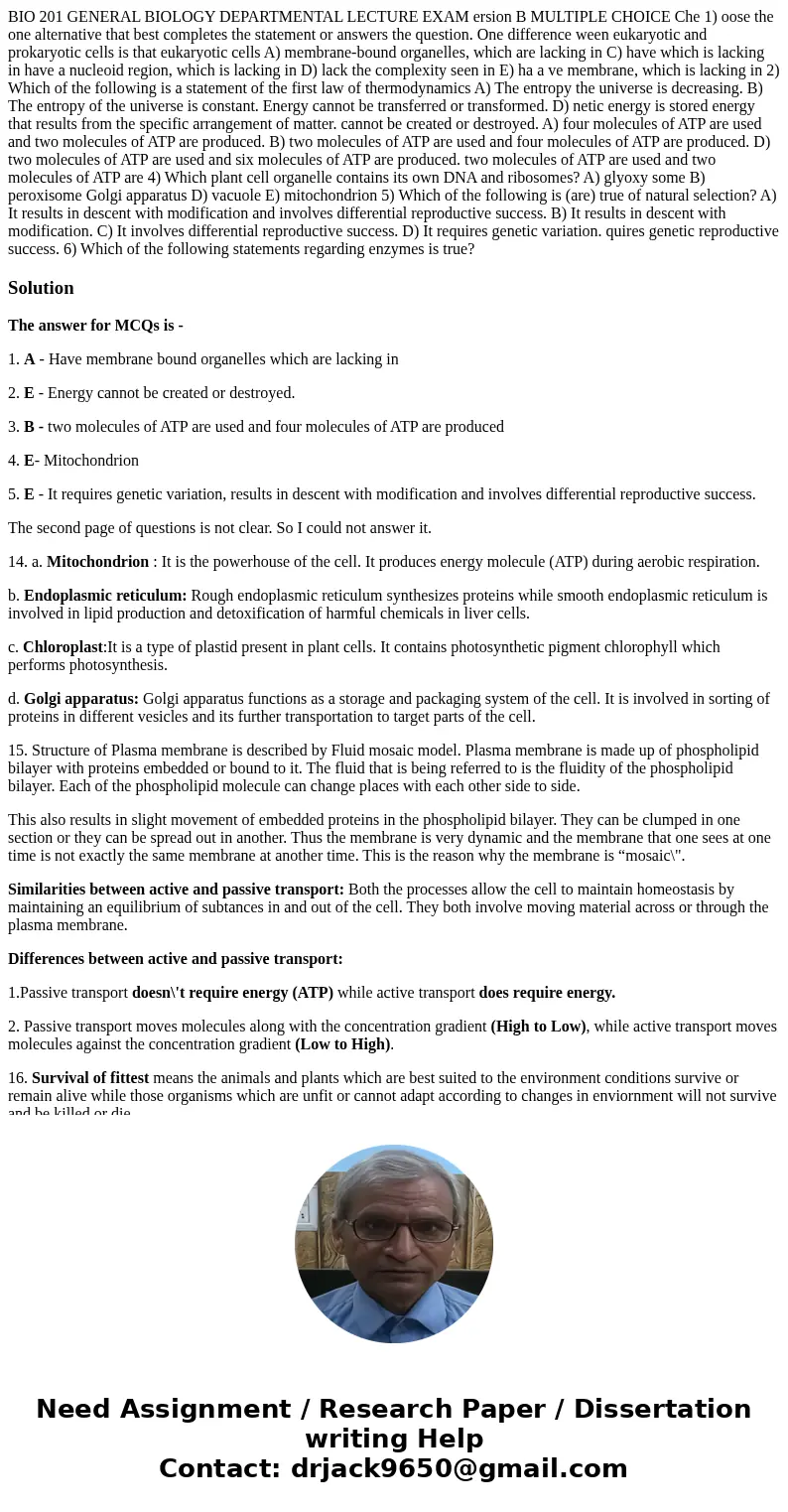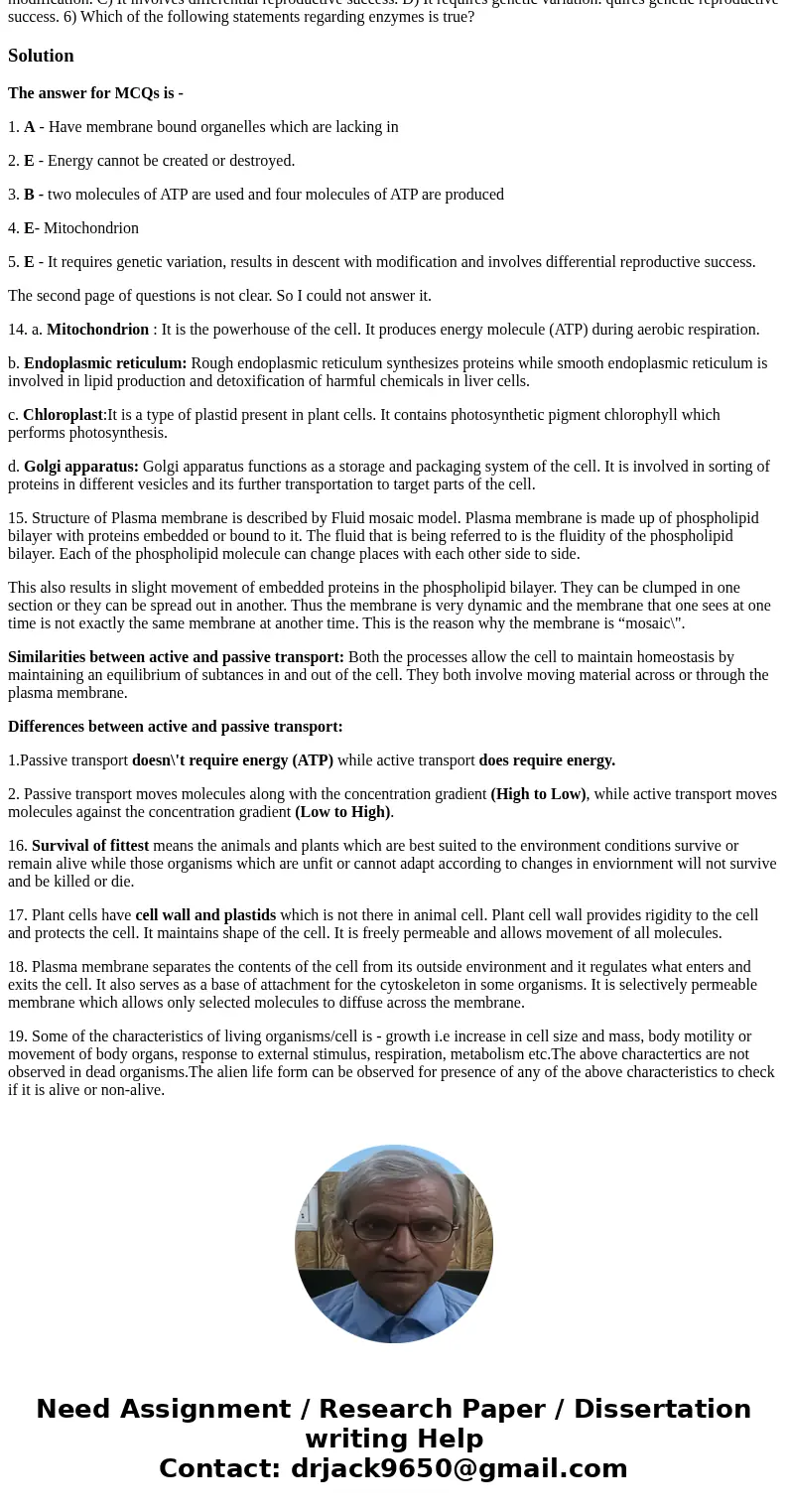BIO 201 GENERAL BIOLOGY DEPARTMENTAL LECTURE EXAM ersion B M
Solution
The answer for MCQs is -
1. A - Have membrane bound organelles which are lacking in
2. E - Energy cannot be created or destroyed.
3. B - two molecules of ATP are used and four molecules of ATP are produced
4. E- Mitochondrion
5. E - It requires genetic variation, results in descent with modification and involves differential reproductive success.
The second page of questions is not clear. So I could not answer it.
14. a. Mitochondrion : It is the powerhouse of the cell. It produces energy molecule (ATP) during aerobic respiration.
b. Endoplasmic reticulum: Rough endoplasmic reticulum synthesizes proteins while smooth endoplasmic reticulum is involved in lipid production and detoxification of harmful chemicals in liver cells.
c. Chloroplast:It is a type of plastid present in plant cells. It contains photosynthetic pigment chlorophyll which performs photosynthesis.
d. Golgi apparatus: Golgi apparatus functions as a storage and packaging system of the cell. It is involved in sorting of proteins in different vesicles and its further transportation to target parts of the cell.
15. Structure of Plasma membrane is described by Fluid mosaic model. Plasma membrane is made up of phospholipid bilayer with proteins embedded or bound to it. The fluid that is being referred to is the fluidity of the phospholipid bilayer. Each of the phospholipid molecule can change places with each other side to side.
This also results in slight movement of embedded proteins in the phospholipid bilayer. They can be clumped in one section or they can be spread out in another. Thus the membrane is very dynamic and the membrane that one sees at one time is not exactly the same membrane at another time. This is the reason why the membrane is “mosaic\".
Similarities between active and passive transport: Both the processes allow the cell to maintain homeostasis by maintaining an equilibrium of subtances in and out of the cell. They both involve moving material across or through the plasma membrane.
Differences between active and passive transport:
1.Passive transport doesn\'t require energy (ATP) while active transport does require energy.
2. Passive transport moves molecules along with the concentration gradient (High to Low), while active transport moves molecules against the concentration gradient (Low to High).
16. Survival of fittest means the animals and plants which are best suited to the environment conditions survive or remain alive while those organisms which are unfit or cannot adapt according to changes in enviornment will not survive and be killed or die.
17. Plant cells have cell wall and plastids which is not there in animal cell. Plant cell wall provides rigidity to the cell and protects the cell. It maintains shape of the cell. It is freely permeable and allows movement of all molecules.
18. Plasma membrane separates the contents of the cell from its outside environment and it regulates what enters and exits the cell. It also serves as a base of attachment for the cytoskeleton in some organisms. It is selectively permeable membrane which allows only selected molecules to diffuse across the membrane.
19. Some of the characteristics of living organisms/cell is - growth i.e increase in cell size and mass, body motility or movement of body organs, response to external stimulus, respiration, metabolism etc.The above charactertics are not observed in dead organisms.The alien life form can be observed for presence of any of the above characteristics to check if it is alive or non-alive.


 Homework Sourse
Homework Sourse